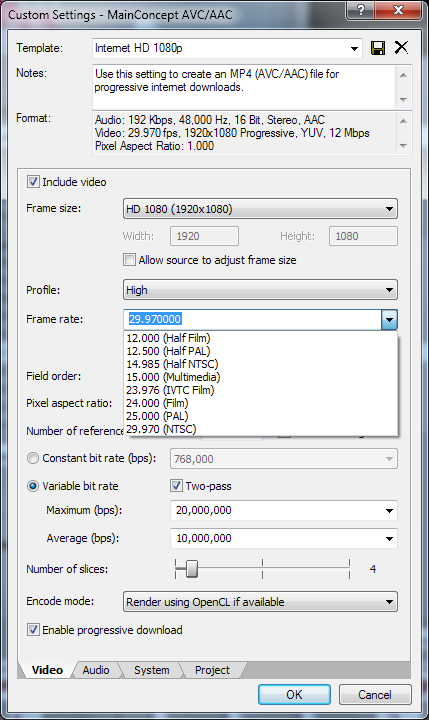
Vegas 16 pro best settings for youtube how to#
If you select it, when you start the render, VEGAS Pro analyzes the entire render area and maps out how to apply the variable bit rate before it begins the actual render. ✓ Click the radio button to select Variable Bit Rate. If this video is meant for display, then Variable Bit Rate might be appropriate. Your video needs to be robust as possible, so you want a constant bit rate. But if you’re going to work with the video, if you’re going to edit it, add effects, adjust the color, or any of many other things you might do, you want as much information in every frame as possible. Virtually every program you’ve ever watched on DVD or Blu-ray was encoded with a variable bit rate, as are many streaming videos. Variable bit rates are excellent for saving space when all anyone will do with the video is watch it. Seems like you should always want variable bit rates, right? Not so fast. If it’s done well, a viewer will never notice the difference. The result is high quality, with a smaller file size than you’d have if you simply processed the exact same amount of information every second. Lower the bit rate where there’s less motion, then increase it when there’s more.

So, a variable bit rate may be ideal for a program which contains both scenes with little motion and scenes with a lot of it. The result is that you don’t need to have as high a bit rate in a slower scene to maintain quality as you do in a scene with a lot of action. Simply repeating the same data from the elements which don’t change and only pushing new data for the elements which do, instead of recording every bit of data for every frame, can save big on the amount of data needed. But in a slow, idyllic scene of the sun rising over a lake, only small elements within the scene change from frame to frame. Sure, in a massive chase scene with lots of action, the imagery changes at a very quick pace. But not every moment of video changes all that much from frame to frame. Most data in video represents information changing because the picture constantly changes. The purpose of variable bit rates is to split the difference between file size and quality. Like the terms imply, a bit rate can vary within a file, where some data is processed faster than other data, or it can remain constant, with the same amount of data processed per second, every second. This can matter when recording video and you only have so much recording media space, or if you want upload video to the Internet very quickly. But if the quality doesn’t matter as much the length, then lower bit rates are better. If you need the very highest quality regardless of file size, then higher bit rates are better. Which is better? It depends on your needs.



The upshot is that you can have the same video in a smaller file size, but the quality won’t be as high. Lower bit rates can mean lower quality, but smaller file sizes per second of video. So, higher bit rate equals higher possible quality, but also higher file sizes. It also means it’s more taxing on a computer or player to process more data, and the file size required for the length of the video is higher. The higher the bit rate, the more data gets pushed through per second, meaning the amount of information is higher, supporting higher resolutions, higher frame rates, and overall higher quality. The number of bits – each zero or one – processed per second is the bit rate. When digital video plays, instead of physical frames running through a projector, a video player processes massive amounts of data in the form of ones and zeros.


 0 kommentar(er)
0 kommentar(er)
